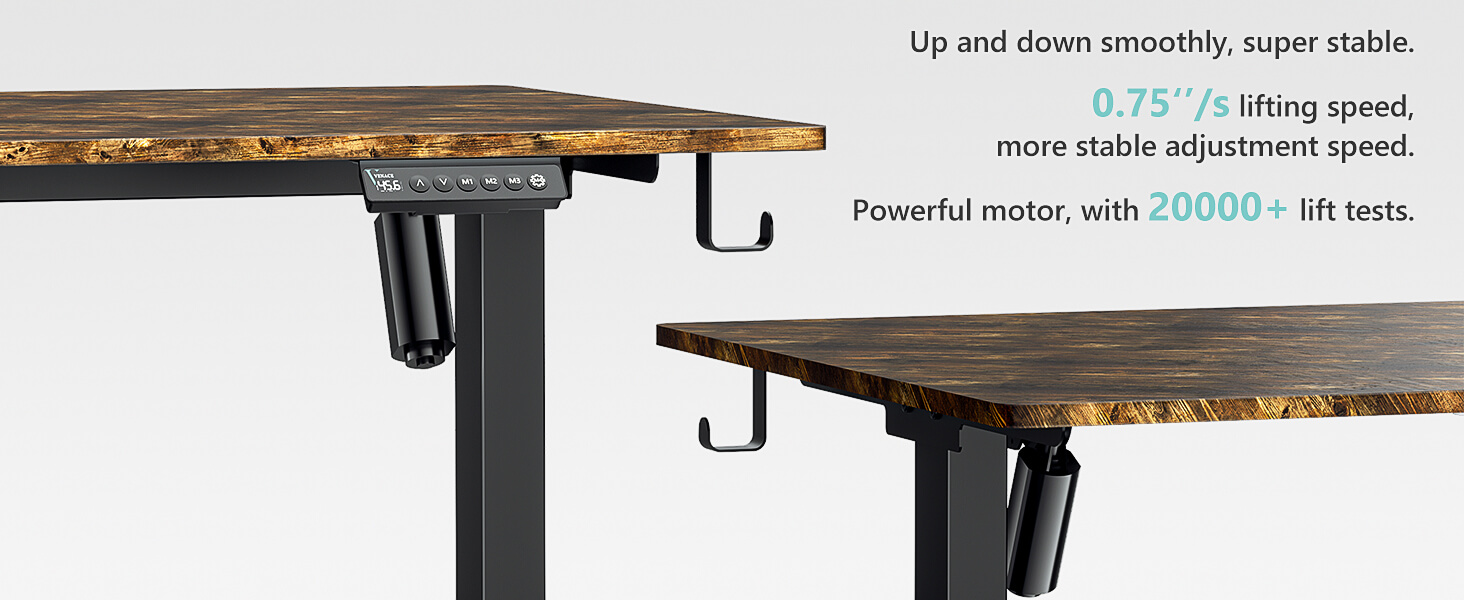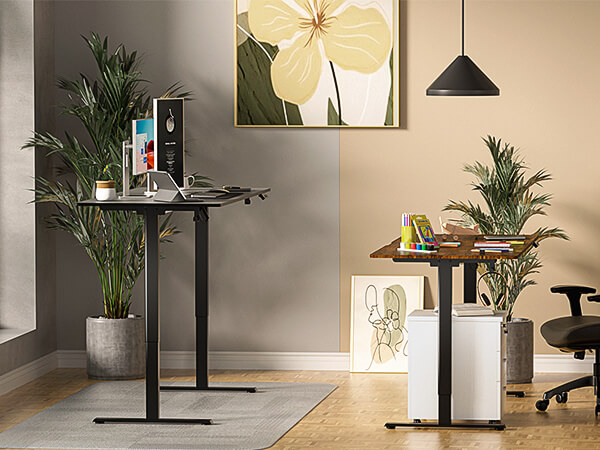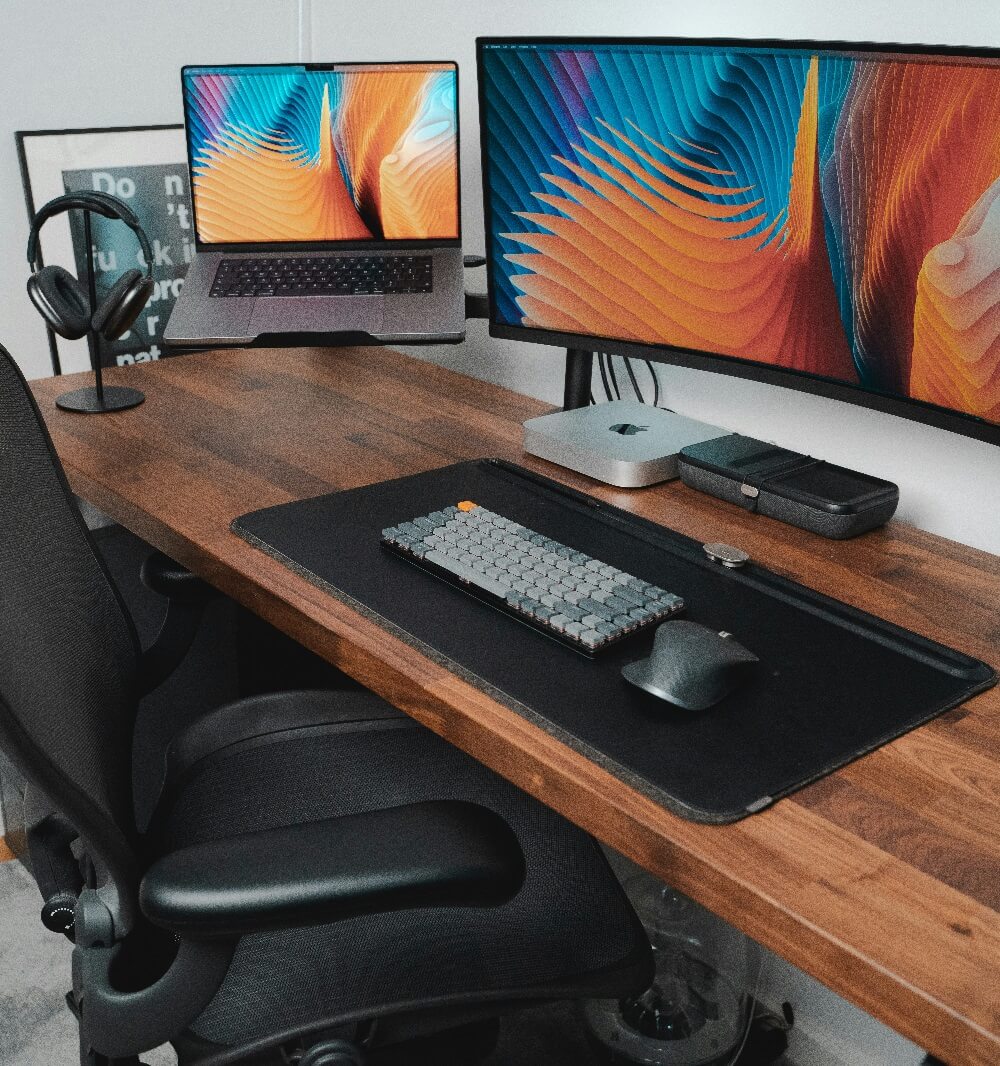In today’s workplace, creating an ergonomic workspace is more important than ever. With many people spending long hours at desks, health problems like back pain, neck strain, and fatigue are on the rise. The solution? Adjustable desks, including standing desks. These desks provide a flexible approach to improving posture and reducing strain. By adjusting their height, they allow users to sit or stand, promoting a healthier work routine.
This article explains how adjustable desks can help you achieve an ergonomically correct workspace. We’ll look at the benefits of standing desks and how to set them up for optimal comfort and health.

Why Ergonomics Matter
Ergonomics focuses on designing workspaces to fit the person using them. The goal is to improve comfort and reduce the risk of injury. In traditional office setups, sitting for long hours can cause pain in the neck, back, and shoulders. The body wasn’t designed to stay in one position for hours. Sitting for long periods can lead to poor posture and poor circulation. This often results in discomfort, fatigue, and long-term health issues.
Standing desks and adjustable desks can help solve these problems. They let you alternate between sitting and standing, helping reduce the strain on your body. This flexibility improves posture, circulation, and energy levels.
How Adjustable Desks Promote Better Posture
An adjustable desk allows you to change the height of your workspace, which helps maintain good posture. When your desk is at the right height, it encourages a natural body alignment. This reduces the risk of developing musculoskeletal problems.
1. Neutral Spine Position
A neutral spine position means keeping the natural curves of your spine intact. Whether you are sitting or standing, maintaining this alignment is essential for avoiding back pain. With adjustable desks, you can set the desk height to maintain this natural position.
When standing, your elbows should be at a 90-degree angle, with your forearms parallel to the floor. This minimizes strain on your upper body. When sitting, the desk should be at a height where your knees are bent at 90 degrees and your feet rest flat on the ground.
2. Preventing Musculoskeletal Disorders
Musculoskeletal disorders (MSDs) are common in people who sit for long hours. Conditions like neck and lower back pain can be caused by sitting too long without moving. Adjustable desks help by allowing you to stand. Standing reduces the pressure on your spine and helps keep your muscles active.
When you stand, your body naturally adjusts, activating muscles in your legs, core, and back. This dynamic movement keeps your body engaged and helps prevent the stiffness that comes from sitting for long periods.
3. Improving Circulation and Reducing Fatigue
Standing desks also improve circulation. When you sit for long periods, blood flow to your legs can be restricted. This can cause swelling, discomfort, or even more serious issues like blood clots. Standing helps keep blood circulating and reduces the risk of these problems.
By alternating between sitting and standing, you keep your body moving, which boosts circulation and helps maintain energy levels throughout the day. Improved blood flow can also help reduce feelings of fatigue, making it easier to stay focused and productive.

The Psychological Benefits of Adjustable Desks
Beyond the physical benefits, adjustable desks offer psychological advantages. Research shows that people who have control over their work environment feel more satisfied and engaged in their work. With an adjustable desk, you can change your workspace to meet your needs, whether you’re sitting or standing.
Having control over your desk height can reduce stress and improve your mental clarity. When you’re not distracted by discomfort, you can focus better on your tasks. The flexibility of an adjustable desk helps you create a workspace that supports both your body and your mind.
How to Adjust Your Adjustable Desk for Maximum Ergonomics
To get the most from your adjustable desk, it’s important to set it up correctly. Here’s how to adjust it for optimal comfort:
1. Set Desk Height for Standing
When standing, your desk height should allow your elbows to remain at a 90-degree angle. Your forearms should be parallel to the ground, and your wrists should float comfortably above the keyboard. If the desk is too high, you’ll raise your shoulders, causing strain. If it’s too low, you may lean forward, which can lead to back and neck discomfort.
2. Set Desk Height for Sitting
When sitting, adjust the desk so that your knees are at a 90-degree angle and your feet rest flat on the floor. Your thighs should be parallel to the ground, and your wrists should be straight when typing. Avoid letting your arms reach too far forward or upward.
3. Monitor Placement
Your monitor should be at eye level to reduce neck strain. When standing, the top of your screen should be at your eye level, so you don’t have to tilt your head up or down. Your monitor should be about 20 to 30 inches away from your face to avoid eye strain.
4. Avoid Prolonged Sitting or Standing
Switching between sitting and standing throughout the day is key to staying comfortable and avoiding fatigue. Don’t stand for too long or sit for too long. Try to alternate every 30 to 60 minutes. This will help keep your muscles engaged and reduce the strain on your body.

The Long-Term Benefits of Adjustable Desks
Using an adjustable desk regularly can have long-term health benefits. These desks can help reduce the risk of chronic pain and musculoskeletal disorders. By improving posture, circulation, and muscle engagement, they support overall health and productivity.
Studies have shown that people who use adjustable desks feel more energized, experience less discomfort, and are more productive. The flexibility to switch between sitting and standing helps you maintain a healthier work routine and improves your mental clarity.
Conclusion
Adjustable desks, including standing desks, play a key role in creating an ergonomically correct workspace. They allow you to adjust your workspace to fit your body’s needs, improving posture, circulation, and energy levels. By alternating between sitting and standing, you reduce strain and fatigue, leading to better health and productivity. Investing in an adjustable desk is not just an investment in comfort; it’s an investment in your long-term health and professional success.
